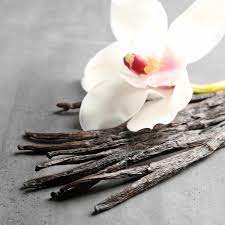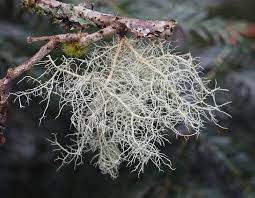Disclaimer: This Materia Medica is provided for informational purposes only and should not replace professional medical advice. Please consult with a qualified healthcare practitioner or herbalist before using any herbal remedies.
Materia Medica: Vanilla Bean (Vanilla planifolia)
Introduction: Vanilla bean, scientifically known as Vanilla planifolia, is a beloved and aromatic spice derived from the pods of a climbing orchid native to Mexico. It is famous for its sweet, warm, and comforting fragrance, as well as its widespread use in culinary and therapeutic applications. As a professional herbalist, I present an exhaustive Materia Medica on vanilla bean, exploring its history, traditional uses, modern applications, preparation methods, safety considerations, and potential therapeutic benefits.
Botanical Description:
- Botanical Name: Vanilla planifolia
- Family: Orchidaceae
- Common Names: Vanilla, Bourbon vanilla, Tahitian vanilla, Mexican vanilla
- Parts Used: Dried vanilla pods, occasionally vanilla flowers
Historical and Cultural Significance:
- Indigenous to Mexico, vanilla has been used for centuries by the Totonac people, who believed it possessed aphrodisiac properties.
- The Aztecs incorporated vanilla into chocolate beverages, which was introduced to European explorers like Hernán Cortés in the 16th century.
- Vanilla quickly gained popularity in Europe and became a symbol of luxury.
- Today, vanilla is one of the world’s most widely used and recognized flavors.
Traditional Uses:
- Culinary Delight:
- Vanilla beans are used as a flavoring agent in baking, confectionery, and various desserts.
- The seeds inside the pod, known as vanilla caviar, are scraped out and used for their intense flavor.
- Aromatic and Relaxing:
- Vanilla essential oil is used in aromatherapy for its calming and stress-reducing properties.
- The scent of vanilla is often associated with warmth and comfort.
- Digestive Aid:
- Vanilla has been traditionally used to soothe digestive discomfort.
- Infusions or teas made from vanilla pods may help with indigestion.
Modern Applications:
- Culinary:
- Vanilla extract, vanilla paste, and vanilla sugar are common culinary products.
- Used in a wide range of dishes, from baked goods to beverages.
- Aromatherapy:
- Vanilla essential oil is used in diffusers, candles, and massage oils for relaxation and mood enhancement.
- Skincare:
- Vanilla is added to creams, lotions, and balms for its soothing and antioxidant properties.
- It can help alleviate skin irritation and redness.
- Perfumery:
- Vanilla is a popular base note in perfumes and colognes due to its long-lasting and comforting scent.
- Traditional Medicine:
- Some herbalists use vanilla in tinctures or teas to address anxiety and stress-related conditions.
Preparation Methods:
- Vanilla Extract:
- Made by macerating vanilla beans in alcohol, typically vodka or rum.
- Used as a flavoring agent in cooking and baking.
- Vanilla Infusion:
- Vanilla pods can be steeped in hot milk, cream, or alcohol to make vanilla-flavored liquids.
- Vanilla Essential Oil:
- Extracted via steam distillation of vanilla beans.
- Used in aromatherapy and skincare.
Safety Considerations:
- Vanilla is generally considered safe when used in culinary and aroma applications.
- Essential oils should be diluted before skin application and should not be ingested.
- Allergic reactions to vanilla are rare but can occur. Always patch-test new skincare products.
Potential Therapeutic Benefits:
- Relaxation: Vanilla’s soothing aroma may help reduce stress and anxiety.
- Antioxidant Properties: Vanilla contains antioxidants that may have anti-aging effects.
- Digestive Aid: Traditionally used to alleviate digestive discomfort.
- Skin Soothing: Vanilla can help calm irritated skin and reduce redness.
In conclusion, vanilla bean is a versatile and beloved herb with a rich history and a wide range of culinary, aromatic, and therapeutic uses. While it is primarily known for its delightful flavor, its calming and soothing properties make it a valuable addition to modern herbal practices and well-being rituals. However, it is essential to use vanilla and its derivatives responsibly and be aware of potential allergies or sensitivities.







One comment on “Vanilla Bean: Herbal Plant Profile”